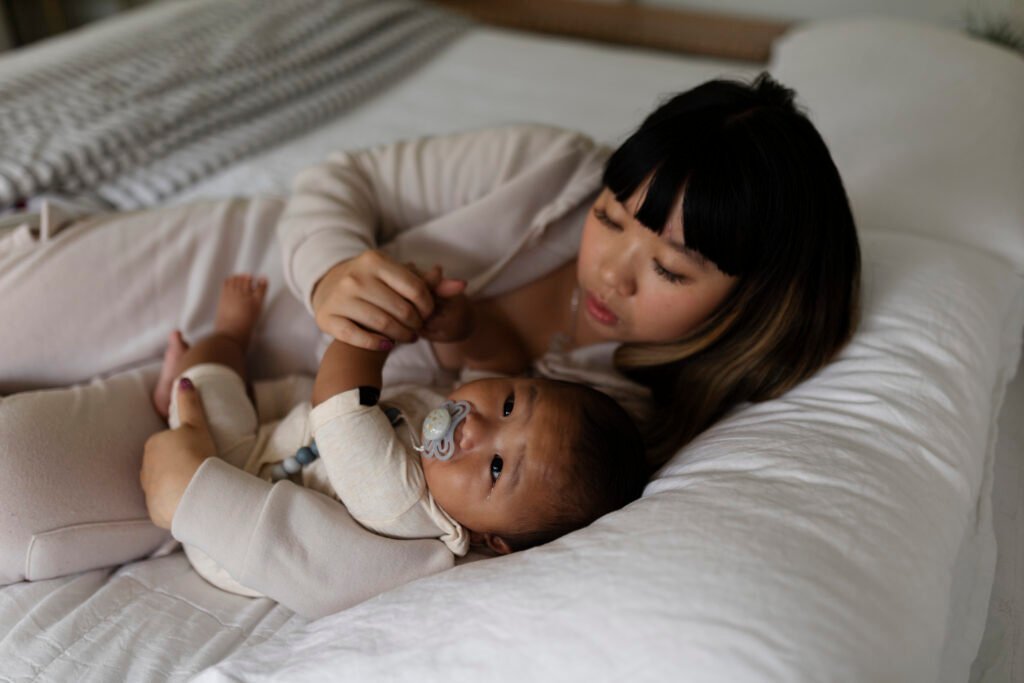Wondering when to make the shift from two daytime naps to one? Let’s dive into this common concern, but remember, if it’s working well, there’s no need to fix it! Better sleep can contribute to happier and healthier children. Improving baby’s sleep is crucial, as it supports their overall development and well-being. If your little one is thriving with two naps, nighttime settling, and sleeping through, stick with it.
Introduction to Baby Sleep
Baby sleep is a crucial aspect of a child’s development, and it plays a significant role in their overall health and well-being. As a parent, it’s essential to understand the importance of sleep training and how it can impact your child’s sleep patterns. Gentle parenting and attachment parenting are two popular parenting styles that focus on creating a nurturing environment for children to thrive. Sleep training is a process that helps young babies learn to fall asleep and stay asleep, and it’s essential to approach it with a clear understanding of the child’s needs and boundaries. By establishing a consistent bedtime routine and creating a sleep-conducive environment, parents can help their children develop healthy sleep habits and improve the quality of their sleep.
The Right Timing

Typically, the average age to drop to one nap is around 15-18 months. However, the term “average” varies, and your child may be ready anywhere from 12 to 22 months. Parents should spend time observing their child’s readiness for this transition.
Signs that your baby is ready for the transition:
Keep an eye out for signs like:
Early Rising – Gradually waking earlier and earlier and being unable to get back to sleep.
Difficulty Falling Asleep And Staying Asleep for naps- Taking longer and longer to go to sleep, fighting naps, cat napping when they used to sleep longer, or only falling asleep at the time when they should be waking up from their second nap.
Resisting/ delayed bedtimes – Taking too long 1/2 hour or more to fall asleep at night and or prolonged/ delayed bedtime routines.
Split Nights: Waking overnight and staying awake for an hour or more.
Early Transition and Sleep Training

Although most babies drop naps at around 15 months some babies may transition sooner, and few have even transitioned to one nap before 12 months, in my experience this is often due to lower sleep needs or a history of disrupted sleep. Babies who don’t have a good sleep routine tend to struggle with sleep as a general rule and are more likely to fight sleep and naps resulting in dropping naps sooner rather than later. If you notice 2 or more of these signs consistently for a few weeks, it might be time to consider the shift to one nap.
While some parents advocate for traditional sleep training methods, others prefer gentler approaches, emphasizing the variety of choices available to families regarding sleep practices.
Signs Your Baby Is Ready:
• Early rising
• Difficulty settling for naps
• Falling asleep when they should be waking up
• Prolonged bedtime routine
• Waking earlier in the morning
Ideal Nap Time and Sleep Patterns

Once the transition is imminent, aim for a nap between 11 am and 1 pm. This ensures they sleep during the middle of their day, not necessarily at midday. Establishing clear and consistent boundaries around nap time is crucial for creating a predictable routine that helps your child feel secure and develop autonomy. As your little one will be sleeping through ‘lunchtime’, I generally recommend that you offer a lunch or large morning tea and maybe a milk feed before their nap and another large meal after their nap so they are fully satiated during their nap. Consider dropping snacks and offering 4 meals for a few months (Breakfast/ 1st Lunch before nap 2nd Lunch after nap and Dinner)
Adjustment Period

The transition to one nap might take a few weeks, during which your little one may feel a bit overtired. To ease this, start the bedtime routine 30 minutes earlier. Recognizing and validating your child’s feelings during this adjustment period is crucial. Be open to the possibility of a catch-up day with two naps or a short afternoon catnap 1-2 days a week for the first few weeks, the shorter nap can be an assisted car or pram nap if they are likely to fight the nap in their crib.
Supporting Your Little One with Gentle Parenting

During the adjustment period, be attentive to signs of tiredness in the late afternoon. A calm playtime, reading, or a stroll in the pram around 4 pm can help them wind down and adapt to the new routine. Think of this time as our chill time in the evening, watching tv and winding down before going to bed. Providing a low-stimulation activity/ period in the late afternoon will help them in the lead-up to bedtime.
Creating a calm environment where children feel safe is crucial. Clear and consistent expectations around sleep can provide comfort and security, helping them cope with anxiety and fostering a sense of attachment to their caregivers.
Sleep well, mama!
Real Life Examples and Challenges
Real-life examples of sleep training can be helpful for parents who are struggling to get their baby to sleep. For instance, a parent may try the Ferber method, but find that it’s not working for their baby. In this case, they may need to try a different method, such as the chair method or the fading method. It’s essential to be flexible and adapt to the baby’s unique needs and preferences. Additionally, parents may face challenges such as separation anxiety, nighttime waking, and frequent night feeds. Understanding that these challenges are common and part of the parenting journey can help parents remain calm and patient as they navigate their baby’s sleep issues.
Seeking Support and Resources
Navigating the transition to one nap and addressing sleep issues can be challenging, but you don’t have to do it alone. Seeking support and resources can make a significant difference. Consider joining parenting groups where you can share experiences and gain insights from other parents. Books and online forums dedicated to sleep training and gentle parenting can also offer valuable advice and techniques. Remember, it’s okay to ask for help and lean on your support network. By connecting with others and accessing reliable resources, you can feel more confident and supported in your parenting journey.

